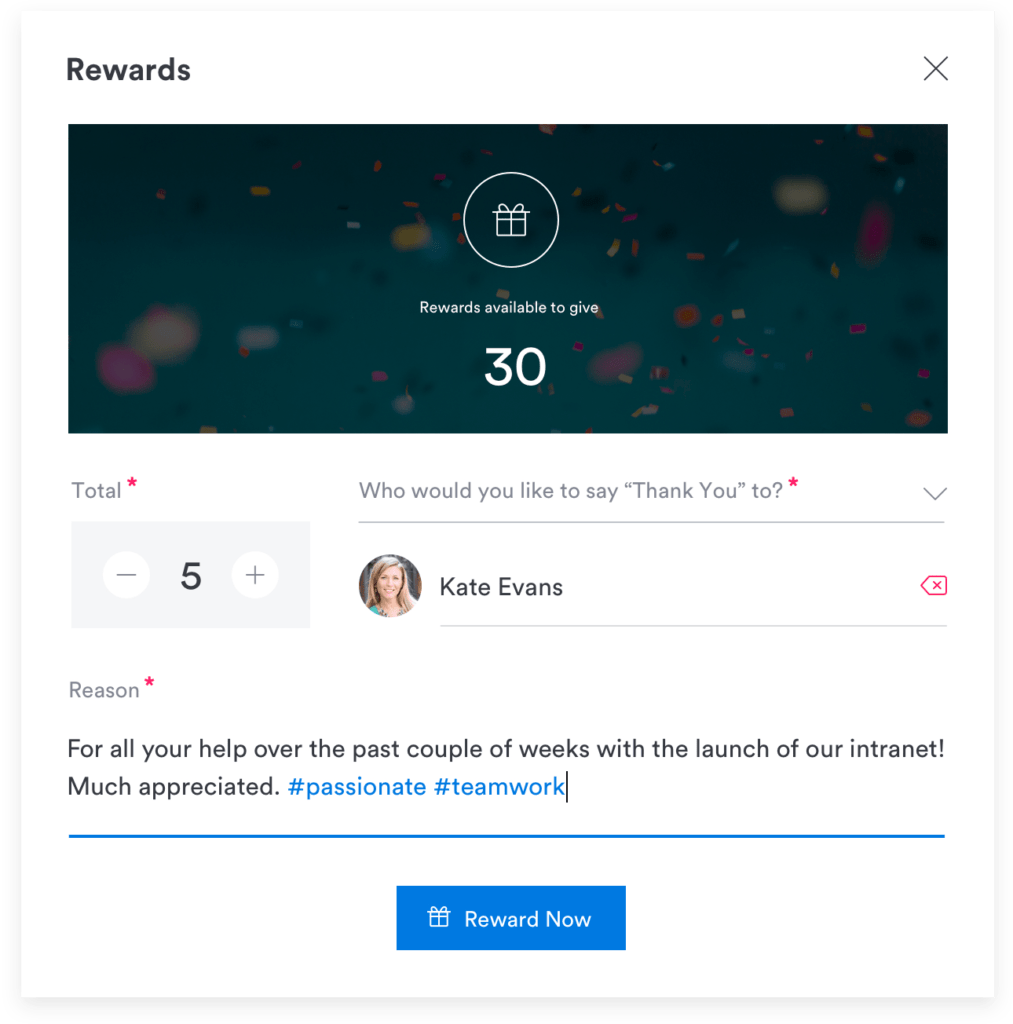With mass remote working now a reality for organizations globally, trust has never been more important, or more challenging, to foster.
Research has proven, time and again, that high employee engagement leads to positive results for both organizations and staff.
Engagement is defined as having a strong connection to one’s work and colleagues, feeling like a real contributor, and having ample opportunities to grow and learn.
With high engagement correlating to increased productivity and happiness, it’s clear that empowering and challenging employees is more than a ‘nice to have’: it’s a business imperative.
Many companies do this by offering Friday lunches, or bagel Mondays, and even company outings to make employees feel connected. Some even use money as their prime motivator. While most of this helps make employees feel good ‘in the moment,’ all these activities will ultimately fail when it comes to long-term retention and performance.
According to Paul J. Zak’s research in The Neuroscience of Trust on HBR, building a culture of trust is what truly makes a meaningful difference.
When you build a culture of trust, your employees will:
- Be more productive
- Have more energy
- Collaborate better
- Suffer less chronic stress
- Be happier with their lives
…and will ultimately stay with their employers longer.
55% of leaders believe a lack of trust in the workplace constitutes a foundational threat to their company.”
2016 survey of CEOs by PWC
At a time when the majority of our staff are working remotely, often with the additional distraction of family, children, or partners, establishing that foundation of trust has never been more important: or more challenging.
Understanding trust
So, why haven’t companies put more effort into building types of corporate culture centered around trust?
Likely, because they don’t know how: and to understand how to facilitate trust, you must first understand what makes people trust others.
Zak’s research sought to understand and measure trustworthiness, and what makes one person more likely to be trustworthy than another.

An initial experiment measured the likelihood of strangers to trust one another by evaluating the levels of oxytocin in their blood. Zak found that “oxytocin appeared to do just one thing: reduce the fear of trusting a stranger.”
The more oxytocin a person had in their system, the more likely they were to trust someone. Zak and his team spent the next ten years running tests to identify what promotes oxytocin and what inhibits it, both in the workplace and out.
What did he find?
- High stress reduced oxytocin significantly
- Oxytocin increases a person’s empathy
- The relationship between trust and oxytocin is universal
During this extensive research, Zak discovered eight measurable management behaviors that foster trust and improve performance.
8 management tactics that will help create a culture of trust in your organization.

1. Recognize staff in the moment and empower employees to do the same
Employee recognition has a significant impact on engagement, motivation, satisfaction, and productivity. It also directly correlates to how much staff trust their boss.
According to the neuroscience, recognition has the most significant impact on trust when:
- It’s given as soon as a goal has been achieved
- It’s awarded from your peers
- It’s tangible and genuine
- It’s personal and public
Finding the right way to recognize your employees depends on the type of organization and individual you are celebrating. There are a variety of ways to publicly recognize employees spanning a wall of fame, hosting value-led awards, announcing success in your all-hands meeting, to a virtual peer to peer recognition program via your intranet.
With today’s massive shift to remote working, a social intranet provides organizations with an excellent place to recognize and thank their workers.

Employee recognition programs, forums to spotlight employees, and exchangeable gift vouchers are just a few ways to give recognition virtually using the power of the digital workplace.
2. Assign challenging but achievable tasks
The moderate stress of a difficult but achievable task releases neurochemicals like oxytocin and adrenocorticotropin, which intensify focus and strengthen social connections. When teams are challenged to work together to reach a common goal, the brain responds.
Be warned: this only works if challenges are attainable and have an endpoint. By contrast, an unattainable goal will cause people to give up before they even start. To facilitate trust, check-in frequently, and adjust goals when necessary.
76% of people report that their best days involved making progress toward goals.
Teresa Amabile’s findings on the power of progress
3. Let employees work their own way
Give employees the freedom to manage people and do their work in a way that is best for them. Being trusted to figure things out on your own is a huge motivator.
Not only does this foster trust, but autonomy also promotes innovation. Give individuals a task independently and each will likely try a different approach.
Less constrained by the usual way of doing things, less experienced employees will ultimately be your chief innovators.
4. Enable employees to work on what they like

When an employee is passionate about a task, they will likely approach it with more vigor than something they are disinterested in. Enabling employees to work on tasks they care about will ultimately be more rewarding.
With 69% of employees believing they are overqualified, staff can quickly become disengaged if they are working on something they’ve been doing for a long time.
Trusting them to work on what they like and giving them space and opportunity to go above and beyond will ultimately give them greater trust in you.
5. Be open and honest about company information.
Only 40% of employees report that they are well informed about their company’s goals, strategies, and tactics.

When employees are uncertain about where their company is headed, it can cause chronic stress, which in turn blocks the release of oxytocin. This, in turn, reduces their trust in the company. Ongoing communication and openness is the key to combat these toxic feelings.
A 2015 study of 2.5 million manager-led teams in 195 countries found that workforce engagement improved when supervisors had some form of daily communication with direct reports.
Make your leadership team the centerpiece for regular communication, whether it be a significant event, change, or merely an update to the current direction or status of the business.
Your workforce will be grateful for the reassurance, authority, and accountability offered by your senior leadership team providing regular updates. Especially in times of crisis like today, your staff needs to hear from management continually if they are going to build trust and loyalty towards them.
6. Encourage relationship building
It comes as no surprise that we as humans are social creatures, and the more trust we have, the more social we are. This holds true in the workplace as well. Studies have shown that when individuals build relationships and social ties at work, their overall performance and productivity improves.
A Google study similarly found that managers who “express interest in and concern for team members’ success and personal well-being” outperform others in the quality and quantity of their work.” – Harvard Business Review
Team building activities, happy hours, and sponsored lunches all help to facilitate relationships between staff. If your workplace is dispersed, giving employees a space to connect and engage with co-workers is vital.

Digital workplace features like team spaces, blogs, forums, video conferencing, chats, and recognition features all allow remote or dispersed employees to build relationships with others, regardless of location.
7. Facilitate personal and professional growth
Companies with high-trust ratings adopt a growth mindset when developing their talent pool. They ensure their employees have the tools and resources they need to grow into their next role and meet their personal goals.
When an employee sees their manager and workplace care not only about company goals but their own goals as an individual, they are more likely to trust and work harder to support their company.
Investing in the whole person has a powerful effect on engagement and retention.
Give them support to acquire new work skills, set clear goals, give employees the autonomy to reach them, and promote work-life balance.
8. Be vulnerable, be real.
Every great leader can recognize their weaknesses.
Rather than just assigning tasks, ask your staff for help. Asking for help stimulates oxytocin production in others, increasing trust and cooperation. Not only does this facilitate trust, but it also engages everyone to reach common goals.
Be open and honest about things you don’t know. This builds credibility as a leader and encourages employees to help and support.
So, what’s the actual ROI on trust?

Zak wondered the same thing. After researching what caused trust and the managerial behaviors that facilitated it, his attention naturally turned to ROI.
His team started by evaluating evidence gathered from a dozen companies who had launched policy changes to raise trust. Secondly, his team conducted two departmental trust experiments to measure productivity, innovation, and brain activity. Lastly, he collected survey data from 1,095 working adults in the US.
The findings found that the US average for organizational trust was 70%, and 47% of participants worked in organizations that had trust levels below the average. Companies scored lowest on recognizing excellence and information sharing.
The effect of trust on work performance was substantial. Participants from companies scoring the highest in trust reported:
- Having 106% more energy
- Were 76% more engaged
- Were 50% more productive
- Enjoyed their jobs 60% more
- Were 50% more likely to stay
- 50% more likely to recommend their company to family and friends
- 70% more aligned with their company’s purpose
- Felt 66% closer to their colleagues
- Had 11% more empathy for their co-workers
- Depersonalized colleagues 41% less often
- Experienced 40% less burnout
- 41% more felt a greater sense of accomplishment
The statistics are undeniably in favor of trust. In addition, employees earned 17% more at companies with the highest level of trust, which is only possible if the staff at these companies are more productive and innovative.
Trust is money, an essential ingredient to organizational success.
At a time when every action counts, isn’t it time we put trust on the management agenda?


